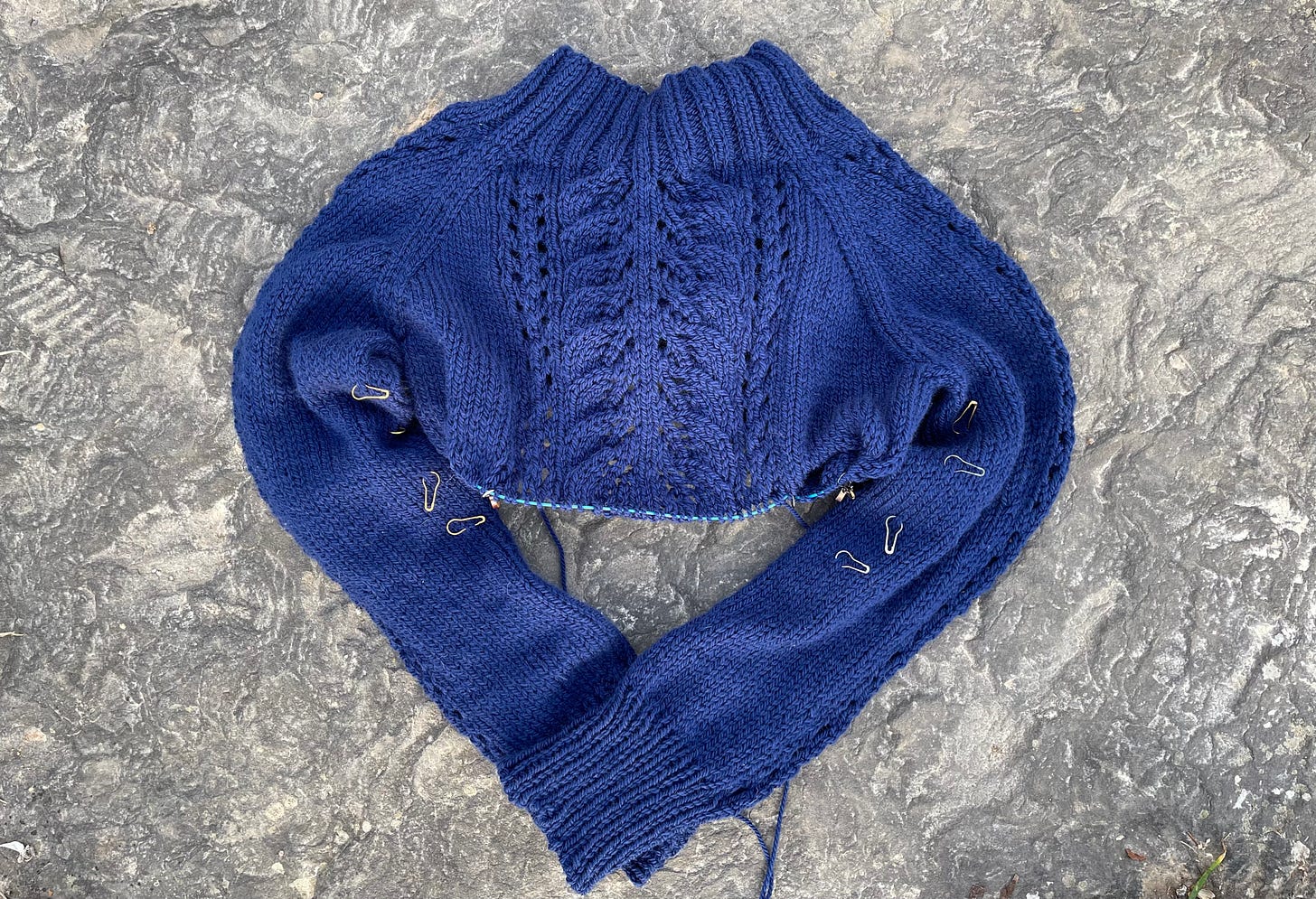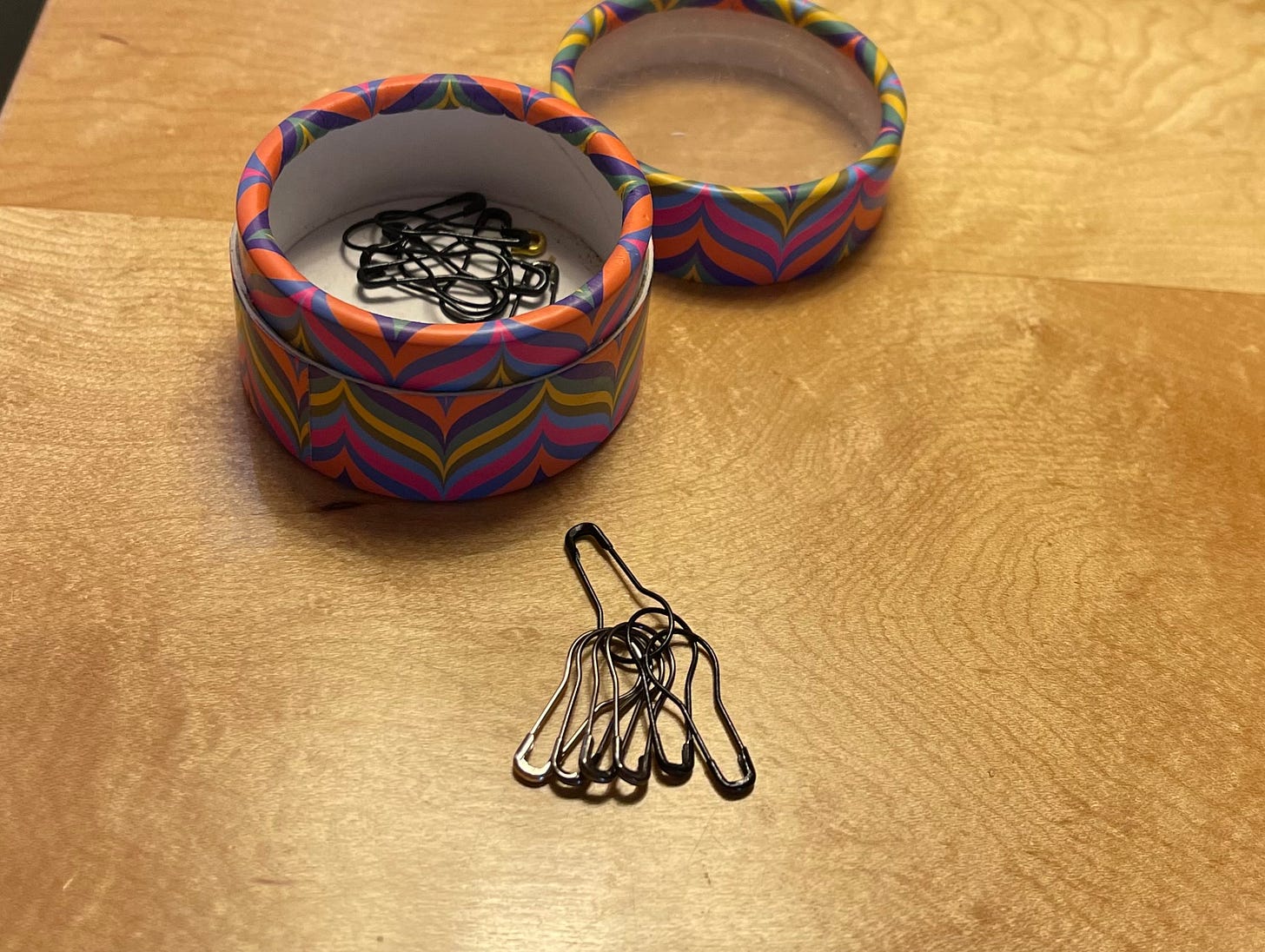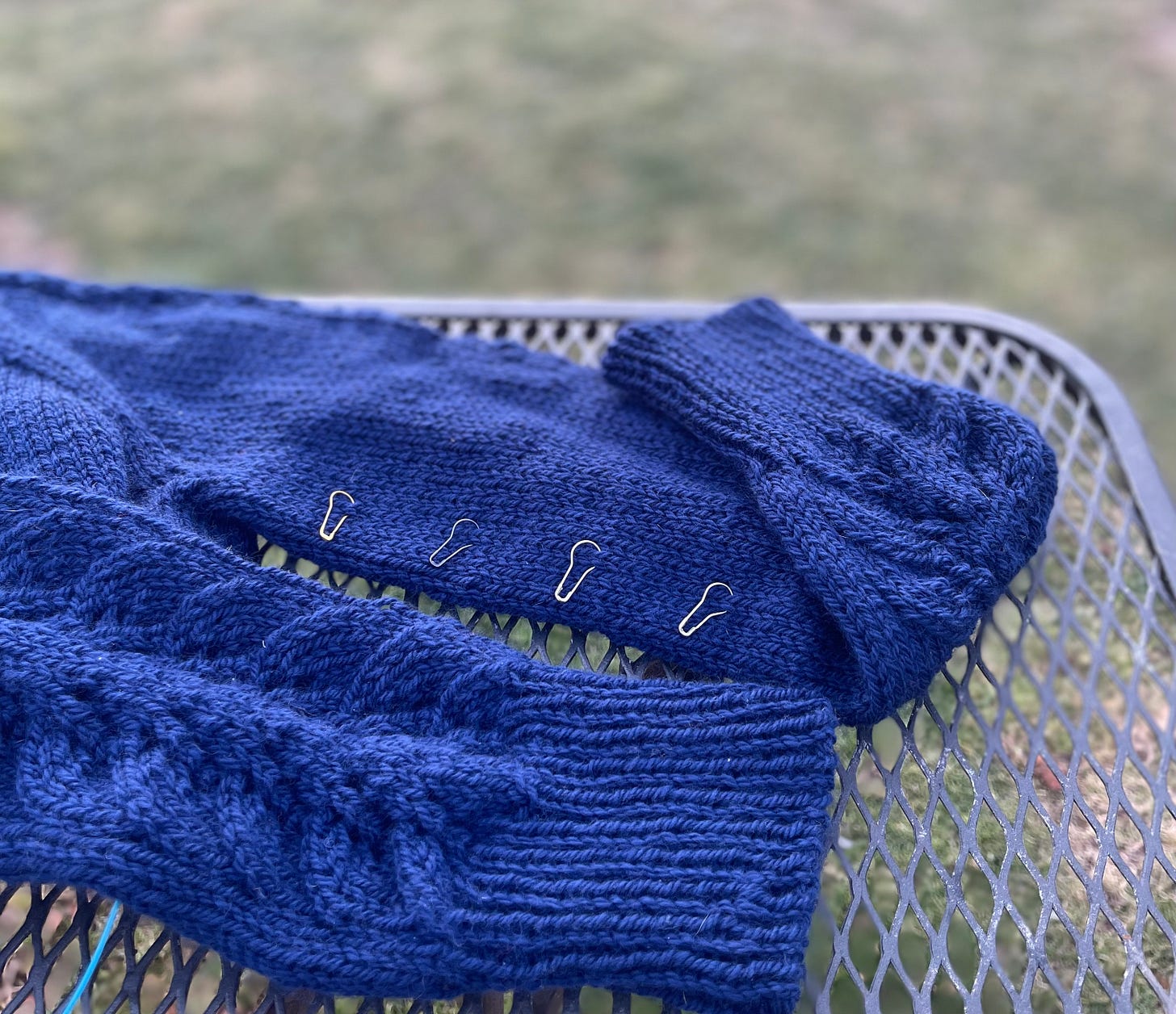Some knitters avoid Sleeve Island. Perhaps they worry they’ll be marooned there.
I, on the other hand, look forward to vacationing in that wooly wonderland.
I recently finished up the sleeves on my Bloomsbury sweater WIP. I absolutely adored what felt like a little knitting vacation—complete with umbrellas over my head and floating in my drinks. I suppose those umbrellas were just in my mind, but you get the picture.
I love knitting sleeves!
I realize not everyone is eager to buy a ticket to (sleeve) paradise with me. I can only assume that’s because they knit sleeves differently than me. Ha! I know, I know. I’ll take off my crown and admit there might be other reasons for knitters’ not enjoying knitting sleeves. But I really, truly love my general method.
Let me share my sleeve-osophy with you, just in case you might find a useful nugget.
But first, sleeves.
I prefer to knit sleeves before I knit the body of the sweater. Whether they are the very first thing I knit (bottom-up sweater) or the part I knit soon after completing the yoke (top-down sweater), sleeves usually get finished before the body.
On a top-down sweater, I like to work the sleeve divide first, then work the next body round where I cast on the underarm stitches, followed by 1-2”/2.5-5cm of knitting the body. I will put those body stitches “on hold”—either by leaving them on the circular needle and being careful during the sleeve knitting, or I place them on spare yarn or stitch saver tubing. (Depends on my needles and mood.)
Fun fact: Jeny’s Very Stretchy Cast On is my go-to for underarm stitches. You don’t need a tail to make it, the cast on edge won’t shift around as much as a backwards loop cast on, and the “purl bumps” created by the cast on provide an easy way to pick up and knit (puk) the sleeve stitches later. It minimizes counting and trying to line up stitches, plus the seam will be sturdy yet flexible.
“It’s not the daily increase but daily decrease. Hack away at the unessential.” —Bruce Lee
Every sleeve I’ve ever knit has included decreases, whether the pattern calls for them or not.
I pick up sleeve stitches like I pick up a top-down sock gusset: I puk a stitch in the gap between the underarm stitches and the sleeve stitches. If I don’t there is always a gap. When I add this tiny but mighty extra stitch, I may still have a bit of open fabric, but it is much easier to manipulate the nearby stitches or sew closed during finishing to close what small gap might be created.
On the next round, I knit to the extra stitch, k2tog, work the sleeve as the pattern indicates to one stitch before the extra stitch, ssk, then work to the end of round. Now the original sleeve stitch is “covering” the extra picked up stitch, my stitch count is correct, and I’m ready to head on down to the sleeve cabana.
Before I start my trek down to the shoreline, I study my pattern to figure out how many sets of decreases I will be creating. Then I take out that number of stitch markers (usually lightbulb markers) and consolidate them all onto one. When I complete my first set of decreases, I use the loaded stitch marker to mark the decrease row. I continue as the pattern indicates, and every time I decrease, I take a marker from my pre-counted set marking that first decrease. By the time I am done with my decreases, all of the stitch markers will be used. No need to count over and over—just think, “Do I have more stitch markers left?” Yes or no. Super simple.
“I feel the need… the need for speed.” —Maverick and Goose, Top Gun
The primary reason I enjoy sleeves is because they’re SO FAST! Even if I’m using fingering weight yarn, each sleeve still only takes a few days. But how do I knit these babies so fast?
I use 9” circular needles!
I have knit sleeves using magic loop and dpns. With the exception of child-sized sleeves, I will never use those again. (I probably shouldn’t say “never,” since I can’t see the future. But given the choice, I choose 9” circs.) Without fail, I pull the wrong needle and end up with 20+ stitches just waving in the breeze. Or I have to waste time rearranging needles.
But the 9” circs let me fly around and around. And I don’t have to worry about my tension or creating dreaded ladders. It’s all smooth and easy.
Not everyone loves 9” circs, and I get it. I decided that I wanted to knit with them. So I practiced—a lot. I started with short knitting sessions, and increased time incrementally. Eventually the small muscles in my hands became much stronger and adept. I trained in 9” circular knitting for months and months, building my strength until my hands no longer cramped when I used the tiny needles. (I wish all of my workout goals were as enjoyable and had such a long-lasting payoff!)
“Great is the art of beginning, but greater is the art of ending.” —Henry Wadsworth Longfellow
I can’t say if my cuff and bind off habits are good or bad, but they work for me. I tend to make every sleeve cuff (and sweater hem, for that matter) a 1/1 rib. I change (if necessary) to the 1/1 ribbing so that I can bind off with the Tubular Bind Off!
Technically, I leave out the slipped-stitch prep rounds, so some may want me to call it an Italian Bind Off. Or Kitchener Bind Off. Or something else??? (Why are there so many names for knitting techniques?!)
However, I don’t really care about those semantics. It lives in my mind as the Tubular Bind Off minus the prep steps. And I’m totally ok with that.
You do you.
I love the Tubular Bind Off on sleeves because it gives such a polished look while also remaining incredibly flexible. It allows the ribbing to bunch up beautifully—as ribbing is wont to do—but also stretch to the ribbing’s broadest capacity.
Time to head back to Body Mainland
And there you have it. Sleeves done! Now I just have to go back and knit the body.
The. Entire. Body.
I hope you enjoyed this little vacation blog, and that it provided some travel tips for your future sleeve escapes.
Check out my designs on Ravelry and Etsy, plus all the Mountain Song Designs links…
Check out my latest YouTube chatty episode where I talk about heading to Sleeve Island.
Or watch my tutorials on Jeny’s Very Stretchy Cast On and the Tubular Bind Off.









